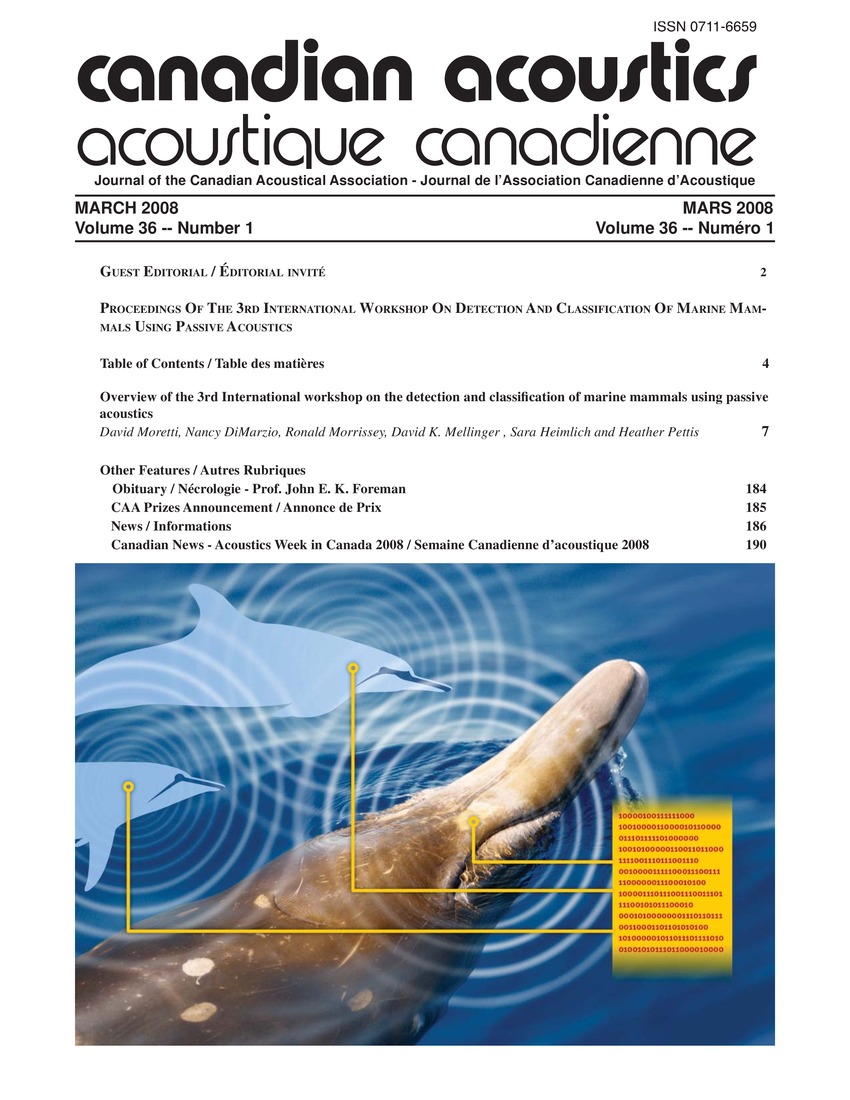Detection of leopard seal (Hydrurga leptonyx) vocalizations using the Envelope-Spectrogram Technique (TEST) in combination with a Hidden Markov model
Keywords:
Acoustic intensity, Boolean functions, Frequency bands, Hidden Markov models, Learning systems, Markov processes, Object recognition, Sensor networks, Signal to noise ratio, Spectrographs, Spectrum analysis, Testing, Marine mammals, Spectrogram techniqueAbstract
This paper describes a technique for the automated detection of leopard seal (Hydrurga leptonyx) vocalizations. Automatic detection of leopard seal calls within the Antarctic underwater soundscape is difficult because (a) the calls are frequently of low amplitude (b) the call duration is highly variable and (c) the frequency band overlaps with those of many other marine mammal vocalizations. However, humans easily distinguish leopard seal vocalizations from those of other marine mammals because of the calls' distinctive sound, which is a result of the pulsed structure of the leopard seal vocalizations. To exploit the unique temporal evolution of the pulse repetition rate (PRR) in high (HDT) and low (LDT) double trills, the Envelope-Spectrogram Technique (tEST) was developed. The extracted PRR feature allows detection of the target vocalizations even against a background of other marine mammal vocalizations. To handle the high variability of the calls' duration, the tEST algorithm was combined with a Hidden Markov Model (HMM) which is particularly well adapted to handle temporal variability. The developed HMM based detection algorithm worked rather reliably. The detection rate over a 4 day test period was high (72 %) although the signal to noise ratio (SNR) was low (< 10 dB). The number of false positive detections (12 %) was tolerable. Most of the false positives occurred during the period when R/V Polarstern was approaching the recording station and the SNR was temporarily < 0 dB. The detector worked 3 times faster than real-time and is therefore suitable for both off line biological research and time critical in-the-field applications, such as the detection of the presence of leopard seals in the context of human diver operations.Additional Files
Published
How to Cite
Issue
Section
License
Author Licensing Addendum
This Licensing Addendum ("Addendum") is entered into between the undersigned Author(s) and Canadian Acoustics journal published by the Canadian Acoustical Association (hereinafter referred to as the "Publisher"). The Author(s) and the Publisher agree as follows:
-
Retained Rights: The Author(s) retain(s) the following rights:
- The right to reproduce, distribute, and publicly display the Work on the Author's personal website or the website of the Author's institution.
- The right to use the Work in the Author's teaching activities and presentations.
- The right to include the Work in a compilation for the Author's personal use, not for sale.
-
Grant of License: The Author(s) grant(s) to the Publisher a worldwide exclusive license to publish, reproduce, distribute, and display the Work in Canadian Acoustics and any other formats and media deemed appropriate by the Publisher.
-
Attribution: The Publisher agrees to include proper attribution to the Author(s) in all publications and reproductions of the Work.
-
No Conflict: This Addendum is intended to be in harmony with, and not in conflict with, the terms and conditions of the original agreement entered into between the Author(s) and the Publisher.
-
Copyright Clause: Copyright on articles is held by the Author(s). The corresponding Author has the right to grant on behalf of all Authors and does grant on behalf of all Authors, a worldwide exclusive license to the Publisher and its licensees in perpetuity, in all forms, formats, and media (whether known now or created in the future), including but not limited to the rights to publish, reproduce, distribute, display, store, translate, create adaptations, reprints, include within collections, and create summaries, extracts, and/or abstracts of the Contribution.


